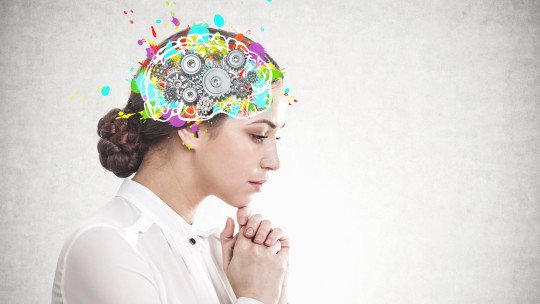
Happiness is one of those topics that interests everyone and that is why psychology has paid a lot of attention to this phenomenon. There are different theories that have tried to explain this construct and there are many investigations that have tried to provide relevant data that allow us to understand its complexity.
One of the best known authors is Martin Seligman, which states that there are five types of happiness In this article we will talk about its model and what its most notable features are.
Who is Martin Seligman?
Dr. Martin Seligman, is an American psychologist and writer considered one of the founders of Positive Psychology He was born on August 12, 1942 in Albany, New York. For many years he has been the director of the clinical training program at the University of Pennsylvania. His work deals with topics such as learned helplessness, positive psychology, depression, psychological resistance, optimism and pessimism.
It was in 1998 when this character decided to change the trend in psychology that focused above all on negative emotions and how to manage them so that people’s well-being and emotional health experience an improvement. Seligman has dedicated himself to researching the implications of positive thinking and emotions and scientifically prove the most effective self-help methods
Seligman’s PERMA model
And the well-being of people cannot be studied without taking happiness into account. The author thinks that happiness has five components that are present in those individuals who are happier. With this idea he created the “PERMA” model which, according to its acronym in English, means:
Components and types of happiness
Seligman’s theory has five components or levels that indicate the types of happiness. The objective of his theory is to measure and encourage personal growth and well-being These are the levels of your model:
1. Positive emotions or pleasant life
At the most basic level of happiness, the person experiences this through emotions It has to do with the amount of emotions we experience during the day. A pleasant life consists of having more pleasant experiences during the day than unpleasant ones. The author thinks that people can learn a series of techniques to increase the duration and intensity of their pleasures.
These positive experiences can be: playing sports, enjoying a good meal, reading, etc. The positive of an experience depends on each person.
2. Commitment or committed life
If in the previous case the pleasures would be more external, in this case the internal ones are incorporated. This is what is known as the “flow state”, in which the person connects with their own desires We create engagement when we are fully present, aware, and creating flow opportunities that lead us to higher levels of well-being.
Seligmann describes engagement as “stopping in time and losing self-awareness during an absorbing activity.” Happiness is developing a large number of optimal “flow” experiences through the use of personal strengths.
3. Relationships
Relationships with others are also a great source of happiness, so to be happy it is necessary to dedicate time to them, because it increases the feeling of support and the perception of well-being. This has to do with all relationships: friends, family, partners… In fact, Social support is closely related to well-being, and some research even claims that they help reduce stress and discomfort. On the other hand, loneliness is associated with a higher risk of dying.
4. Meaning or meaningful life
Seligman describes this level as something bigger than ourselves. The meaning It is the purpose for which we perceive that we exist, that is, what fills us and what we decide to fight for. They are our most desired objectives. Finding meaning in yourself is not always easy, but it is necessary to be happy. The search for meaning and self-actualization is one of the principles of positive psychology.
5. Success or sense of achievement
People can experience positive emotions, engage in different situations, feel the state of flow, we can have relationships that enrich us and find meaning in our lives.
We can have objectives that motivate us and help us develop positively, but the highest level of happiness is that which we achieve when we have set objectives and goals from the heart and have achieved them. So we feel competent and we know that we did what we wanted and we did it well. Achieving goals, especially those linked to our values, increases well-being over a relatively long period of time.
What science says about happiness
And as has been said, there is a lot of research carried out on this topic. Who doesn’t want to be happy? Happiness is something we all pursue.
Over the years, scientists have found different activities, behaviors, attitudes and gestures that can make us happier. But… what are the keys to happiness? Some of the most important findings are the following:
Spend more time with family and friends
As Seligman states, there is much research that has shown that spend time with loved ones it makes us happier.
Travel a lot
Seeing the world and traveling is enriching not only because it opens our minds, but because it makes us feel good. Researchers, however, have found that It is not the trips themselves that make us happy, but planning them
Live the present
Living on expectations, often unrealistic, does not favor our well-being. Instead, live in the present allows us to experience life to the fullest and makes us happier
Gratitude
Gratitude is another of the basic principles of happiness. So whenever you can, thank your loved ones for everything they do for you.
go out into the street
Something as simple as going outside is positive because increases serotonin levels in the brain the neurotransmitter related to happiness.
These are just some examples of what science says about happiness. If you want to know more, you can read this article: “The 10 keys to being happy, according to science”








